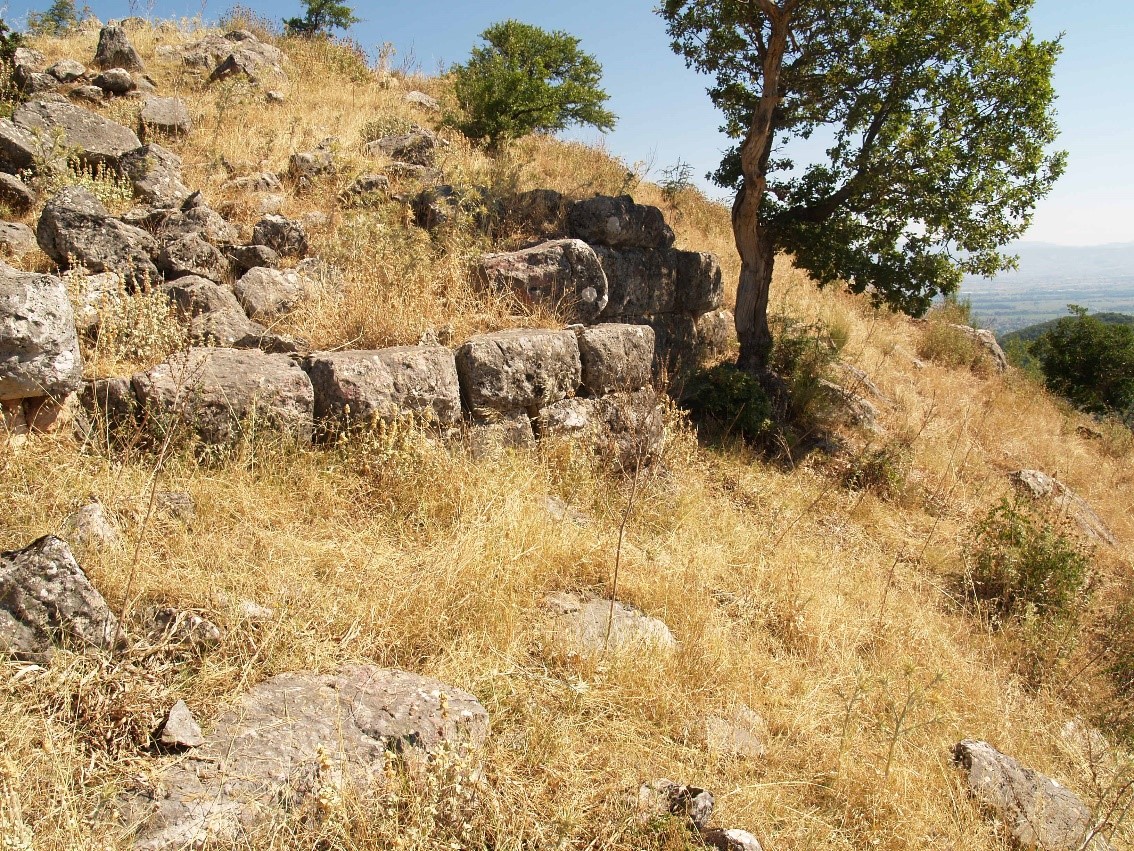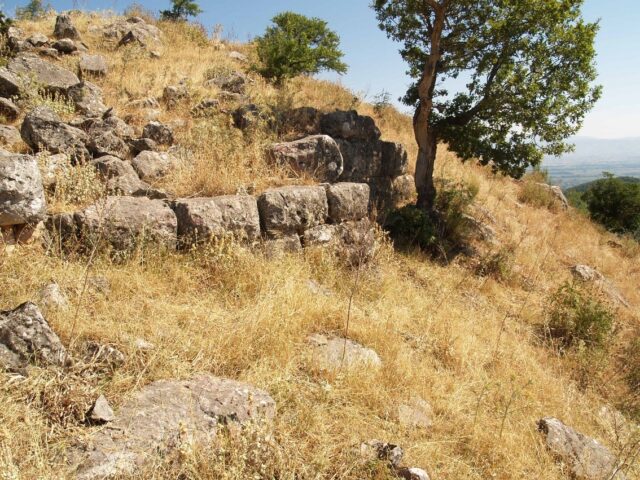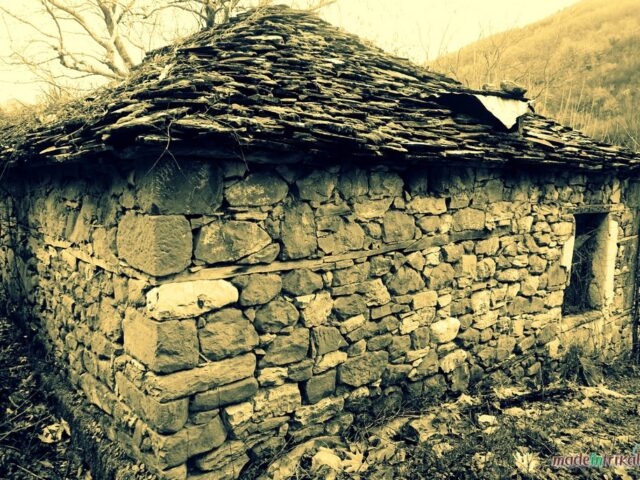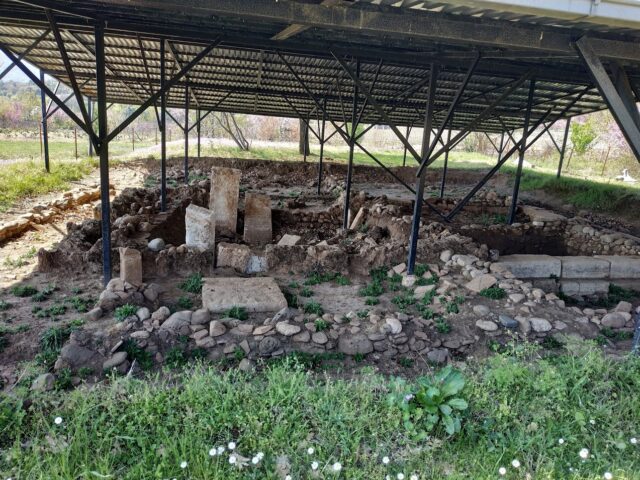Ancient Pialeia – Palaiokastro
Address
Pialeia 421 00
GPS
39.5202, 21.5862
Ancient Pialia is located between Karvounolepenitsa (modern Pialia) and Xylopariko, on a conical peak (site Palaiokastro, elevation 400 m), overlooking the plain and connected to Mount Koziakas. The peak is surrounded by a strong wall, irregular isodomic trapezoidal in shape, dating to the 4th century BC, which was partially investigated by Panagiotis Kastriotis in the early 20th century. To the east, the hill slopes steeply towards the plain, where there is a large scatter of pottery, possibly indicating the location of the lower city of Pialia. According to the excavator, the wall measures 32 m in length, 23 m in width, and 0.65 m in thickness. In the western section of the wall there is a gate. At the center of the acropolis, Kastriotis excavated the foundations of a small building, which he considered to be a sanctuary of Artemis. Among the finds from the sanctuary excavation, Kastriotis reported, among others, coins of the 4th century BC, ten iron spears and spearheads, two iron sword blades, an iron helmet crest, a bronze shield boss, the head of a clay female figurine, a fragment of a statuette (a leg), as well as an archaic bronze statuette of an Amazon from the late 6th–early 5th century BC. At the site Ftelia, where Kastriotis observed “foundations of a settlement,” he discovered a votive relief of the 2nd century BC with the inscription TO ARTEMIDI, as well as a votive relief of a seated woman suckling an infant, which he believed originated from the sanctuary at the hilltop. By Ministerial Decision 12524/9-12-1964 (Government Gazette 38/B/19-1-1965), the “ancient remains between the villages of Pialia (Lepenitsa) and Xylopariko, attributed to the ancient city of Pialia, namely the hill Palaiokastro (elev. 400 m) and the ancient remains at the site below it (Ftelia),” were declared an archaeological site. Certain of the finds are exhibited in the Municipal Museum of Pialia.




